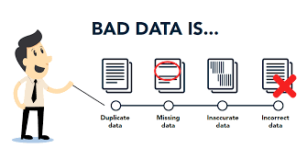Don’t blink…February is already here.
February can sometimes serve as a hard dose of reality. This year was finally going to be the year you realized all those ambitious resolutions. Unfortunately, with January being a month filled full of budgeting, accounting, and other year-end obligations, you probably haven’t had a spare moment to think strategically.
Don’t feel too bad – you still have the better part of the year to make progress.
With January now a distant memory, it’s time you finally sat down and refined (or built) the strategic plan for your business. In this post, I’ll share seven questions to get your strategic juices flowing.
1. What worked?
You probably have a gut feeling about what worked last year. Take, for example, that email campaign your marketing team deployed in mid-July. It was so successful, in fact, that you’re already planning several more like it this year.
Looking beyond the “big wins” of last year, what else worked? What was your seventh-best or eighth-best initiative? How did these programs impact to the company’s bottom line? Without the right data, it’s difficult to know for sure.
Smart business decisions are based on reliable information, which is precisely why you need to connect with your leadership team as soon as possible. Challenge them to identify their five to ten most impactful initiatives, complete with budgeted and actual results. If you receive pushback about data accessibility, you may have identified an issue to solve in the new year (see question #3).
2. What didn’t work?
While you’re at it, go ahead and ask the team to also identify the biggest disappointments of last year. Again, don’t just settle for anecdotal evidence. Ask for specific evidence that something was a failure.
Here’s a classic example. As a marketer, I’m routinely asked to measure the performance of various advertising campaigns. Before I do any analysis, the client will often have a preconceived notion about what didn’t work. However, this opinion may be based entirely on a single KPI, such as number of leads or revenue impact. While these metrics are important, they may not tell the whole story. For the sake of discussion, let’s imagine that I brought the following numbers to you.
| Campaign | Cost | Visitors | Leads | Cost / Lead | Conversion % |
| #1 | $1,000 | 300 | 10 | $100 | 3.33% |
| #2 | $10,000 | 1,000 | 20 | $500 | 2% |
| #3 | $5,000 | 600 | 15 | $333 | 2.5% |
Based on the table above, which campaign was the biggest loser?
If we base success (or lack there of) purely on lead volume, then campaign #1’s meager budget was destined to fail from the get-go. Looking at the data holistically, we learn that this campaign actually had the best conversion rate and most affordable cost per lead. In other words, face value failures can sometimes represent your greatest opportunities for growth!
3. Is anything broken?
The skeptic in you might be tempted to ask what isn’t broke.
As imperfect as your business might seem, the simple truth is that you don’t have time to fix everything. When looking at broken things to fix, you need to cut to the chase and solve the problems that have the greatest impact.
When answering this question, it’s wise to do so through the lens of:
The customer experience: Are customers cancelling or abandoning because they don’t feel loved? Does your product or service need a refresh? Would a better CRM help your company engage more customers and leads?
Revenue-producing activities: Do your sales reps forget to follow up on opportunities? What percentage of the sales team’s day consists of administrative work – rather than making calls? Is it time for an overhaul of your lead management process?
Inefficient back office tasks: Is information getting lost between your CRM and your external project management system? Could you reduce confusion simply by aligning project and sales management into a single system?
4. Where do we waste the most time?
If you can’t pinpoint any “broken” systems to fix, you might try looking for a common symptom: wasted time.
Whether we’ll admit it or not, we all do things that are less than optimal. In fact, one of my strategic initiatives for this year is to identify ways that I waste time. Each time I do something that seems like a time waster, I jot it down for future optimization.
Here are a few goodies I’ve discovered so far:
- Deleting marketing emails that I never bother to read (without unsubscribing first)
- Clicking through endless folders on my computer to find documents
- Constantly pushing out due dates on overdue tasks
- Dealing with overlapping reminders on my smartphone
- Spending time on things that I could have paid someone else to do
As the saying goes, you can’t solve a problem unless you first know that it exists. Although I don’t yet have solutions for these time wasters, I’m at least becoming aware of them.
Lead by example and begin studying your own work habits. You’ll likely inspire others at your organization to do the same!
5. What will soon require attention?
The business landscape is always changing. That’s never been more true than in today’s digital ecosystem.
You may not have a crystal ball, but you know your industry as well as anyone. By this time next year, what external forces (if any) will have changed enough to require your attention? What are experts in your field projecting? Are customer tastes and preferences evolving? How will all of this impact your company’s position in the market?
Taking things one step further, it may even be prudent to prepare a situational SWOT analysis, focusing specifically on the forward-facing aspects of the analysis: opportunities and threats.
To illustrate my point, let’s say that your company supplies injection molded parts to the automotive industry. For years, there have been rumors that your largest customer intends to bring this process in-house, thereby negatively impacting your order volume. Lately, you’re seeing evidence that this may becoming true. The threat is obvious – a significant impact to short-term revenue. On the other hand, the opportunities could be worth thinking about:
Opportunities:
- New capacity
- Expansion outside of automotive
- Greater margin potential
- Diversification of risk
Waiting around for things to happen is rarely wise. Smart business owners (like you!) are always a few steps ahead, especially when it comes to anticipating market forces.
6. What can (and should) be automated?
In today’s world of APIs and workflow automation, it’s amazingly easy to automate certain business processes. Alas, knowing what to automate first is where many business owners get stuck.
If you’re unsure of what to prioritize for automation, here are a few ideas:
Recurring tasks: The delegation process itself is a great place to start. Which tasks do your team members commonly forget to do? Do they (or should they) occur on a predictable pattern? If so, adding a recurrence pattern to your tasks might be a smarter way to delegate.
Pipeline administration: When an opportunity advances from one pipeline stage to the next, there’s typically some action required by your staff. If your pipeline has a “Quoting” phase, common sense tells us that a proposal should be prepared at that time. If only it were that apparent to everyone at your company! Stop hoping for results, and automate the assignment of activity sets.
Order delivery: The moment a deal closes, a race begins to deliver goods or services within the customer’s expected time frame. There’s not a moment to lose, which is why manually transferring information from your CRM to another system is particularly inefficient. A better approach involves keeping everything in one system and simply converting the sales record into a project.
7. Which systems align with our goals?
After digging into the prior six questions, you may begin to notice a common thread stemming back to your company’s technology footprint. Do some of your systems overlap in functionality and create more confusion than value? Or, conversely, are some systems being underutilized, thereby causing your team to do unnecessary work? Would an integration between certain applications create new economies of scale for your business and boost user adoption? These are all questions worth asking.
Remember, a software application offers minimal value on its own. To maximize the value of your company’s technology, it’s important to continuously ensure alignment with your strategic vision. As this vision evolves, so too should the systems deployed by your organization.
Get the Conversation Going
Asking the right questions can be an excellent way to launch an effective strategic conversation. As you work on this year’s strategic plan, consider asking more questions and pushing your team to collect the right answers.
Looking at the truth can sometimes feel uncomfortable, but it’s exactly what you need to do when building a more viable strategic plan.

Matt Keener is a marketing consultant and President of Keener Marketing Solutions, LLC. Matt specializes in content marketing and strategic planning, having helped numerous Saas (software as a service) companies and other small businesses worldwide. Read more of Matt’s work, get his book, or connect on LinkedIn.














 Olga Mykhoparkina is a Chief Marketing Officer at
Olga Mykhoparkina is a Chief Marketing Officer at 











